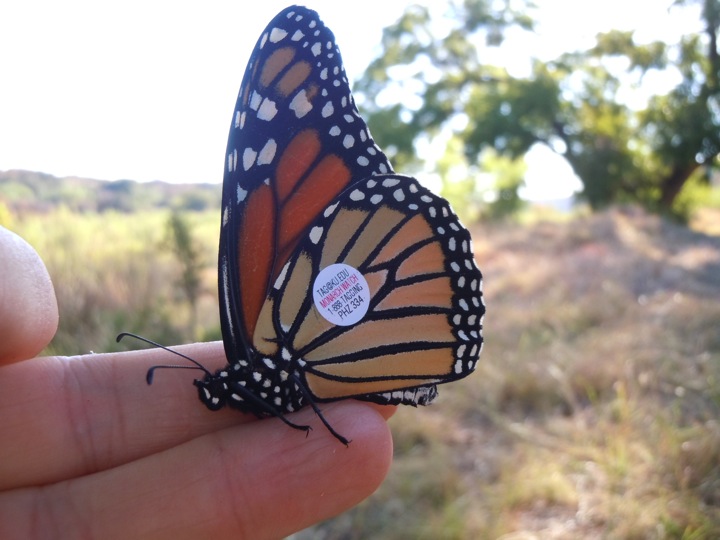Each fall, monarch butterflies arrive in the high altitude forests west of Mexico City in early November, just in time for Day of the Dead/Dia de los Muertos. For centuries, native peoples have associated their arrival with their ancestors coming home for an annual visit.
We honor this tradition each October by tagging hundreds of monarch butterflies in honor of loved ones who died during our month-long Monarch Butterfly and Pollinator Festival.
The names of loved ones will be entered onto data sheets submitted to citizen science project Monarch Watch at the University of Kansas at Lawrence. The organization has been working with volunteers for 30 years, collecting the date, time, place and sex of monarch butterflies that are intercepted on their way to their overwintering roosts in Mexico. The butterflies are netted, briefly observed and tagged, their data recorded, then sent on their way. Now, through our Festival, we’re adding the name of a loved one who died to the data collected, a practice that began in 2020’s COVID epidemic, when mourning was even more challenging than usual.

Tagged monarch on the Llano River. Photo by Monika Maeckle
In the mountains of Mexico where the monarchs spend the winter, local people find dead butterflies on the forest floor that are tagged. They return these tags to Monarch Watch and are paid $5 per tag. The recovered butterflies’ tag numbers are then shared with the public each spring. That’s how we know if any of the butterflies we tagged were recovered.
Those who tag monarchs all carry the hope that their butterflies will reach the Mexican mountains to continue the life cycle. Having the butterfly tagged in honor of your loved one recovered and reported is an especially hopeful sign that the life cycle continues.
In 2021, TWO of the butterflies tagged during our 2021 Festival were recovered. Read their story here.

